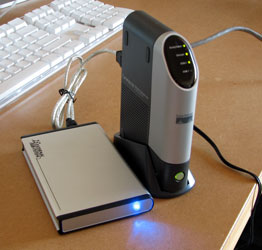I have written previously on how cool the little NSLU2 is as a customisable NAS device. I have set mine up as a little backup device, it silently backs up my server files (using rsync), creates tar files from all the files and then presents these archives to Retrospect on my Mac for backing up to external media and taking off-site. Unfortunately the default 'ls' and 'tar' programs that come with the Unslung distribution do not support large file sizes or long filenames to fix this problem download the far more up-to-date versions using ipkg:
David Harrison's musings on collaboration and I.T.




